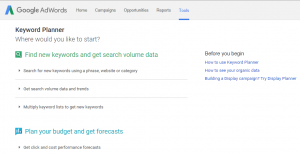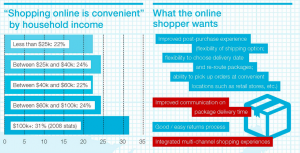The social media landscape is evolving every day. Aside from globally recognized platforms like Facebook, Twitter, Instagram, and others, there are dozens of other platforms that are popular in specific regions of the world.
More platforms to share content on means better rewards, right? Not so much.
Trying to have a strong presence on all social media platforms is spreading yourself too thin. This strategy also ignores the fact that audiences and content types are varied across platforms. Posting the same material on different platforms will not get you more attention. For example, if you’re an engineering publication, it doesn’t make sense to create long, technical text posts for Pinterest which is an image-heavy site.
To be more effective on social media, you need to create a strong presence on a few platforms and make one your primary point of focus. So, how do you choose which platform is right for you? You can make this decision by looking at a combination of factors and weighing the pros and cons of social media platforms against these factors.
Let’s look at some of the top factors that will influence which platform you should prioritize.
Audience interest and demographics
Start where the people are. One of the biggest things to consider is who your audience is and where they’re more likely to spend the most time.
Here are some interesting social media facts to consider:
- Eighty-nine percent of Instagram users are outside the U.S, perfect if you’re looking for a global audience
- Does your target market belong to the younger generation? Then, Instagram and Snapchat are your top platforms as they are the preferred social media sites for users between the ages of 18-25
- Looking for a platform where the audience is educated and on the higher spectrum on the income scale? Then Twitter is the right place to be. 41% of U.S.’s Twitter users report an income above $ 75,000
With a bit of research, you can list social media sites and rank them based on where you’re most likely to find your audience. Some choices simply need common sense. If your work involves decision making from C-level executives, then you’re better off focusing on places like LinkedIn rather than Facebook.
Having a clear picture of who your audience is and where they are likely to spend time will help you pick the right platform.
Your industry and product
The next thing you need to consider is the industry you’re in and the type of product you offer. These factors influence the type of content you create. You need to find an overlap where your content, products, and target audience overlap with the user base of a platform.
B2B companies are less likely to find customers on Pinterest than B2C businesses. Also, if your ‘product’ is largely content like blog posts then you’ll need to consider a platform like Twitter or LinkedIn where people are interested in reading articles.
For clothes retail companies that rely heavily on images to drive conversions, places like Instagram and Pinterest are a must. In this way, do an assessment of your products and the industry you’re in and ask yourself where you can best showcase your work.
And does this overlap with the social media sites where your user base is active? You’ll be able to narrow down on the top platforms you should focus on.
Consider your business goals
The most common reason to use social media for your business is to drive conversions. This can be through building your email list, creating more traffic, boosting your brand image, and more.
But you can use social media for other reasons. Many businesses use Twitter to offer customer support. Top brands also rely on LinkedIn to hire people. These are also important ways to grow your business.
Most platforms allow you to carry out advertising and other marketing activities. If you’re looking for ways to reach decision-makers in a business or connect at a professional level, LinkedIn’s InMail feature is unique.
All this to say, that with the other factors taken into consideration, you’ll be closer to finding the best platform for you.
Measure and test your marketing efforts
When it comes down to it, it’s not possible to predict exactly which platform you should focus on the most. In any marketing effort, testing, data collection, and analysis give you a clearer picture of what’s working.
When posting to different platforms, here re different things to watch out for:
- Where do you get the most engagement?
- How are your posts converting? Are you getting traffic to your website or building your email lists?
- Does your tone or overall voice make sense and what happens if you change it?
Use analytics and look at which platforms send the most traffic to you. It’s a YMMV situation. It’s also important to use content strategically. Video is the most engaging content type you can use. So consider the impact of videos against text posts, images, and other content.
Find the best social media platform fit for you
In the end, there’s no substitute for actual experience. With the help of the ideas given here and some common sense application, you’ll be able to figure out the best social media platform for your business.
Other steps you can take are to optimize your content for SEO, use attractive visuals, and ask your audience for direct feedback. You’ll quickly learn what works best for you and will see better success through social media marketing.
Digital & Social Articles on Business 2 Community
(72)
Report Post





